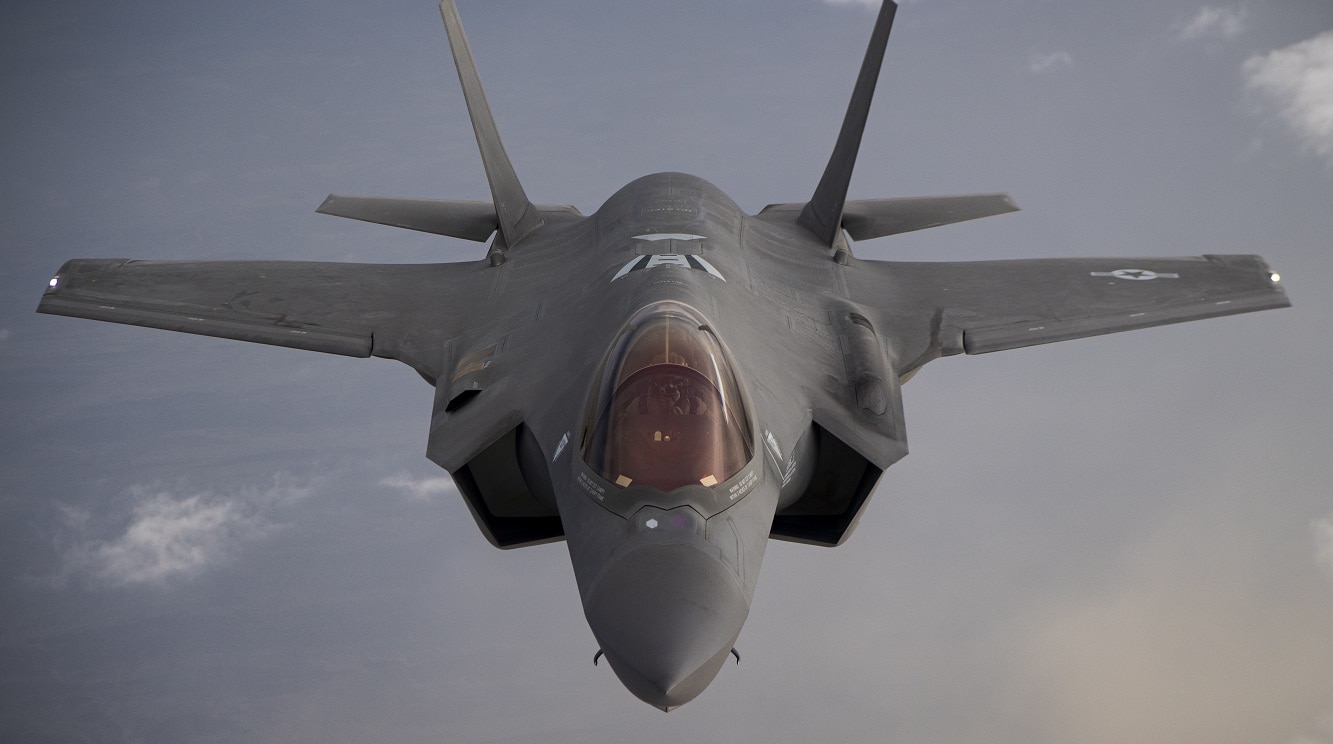Just what should we think about the F-35 Joint Strike Fighter? Expert opinion seems to be all over the place and hard to understand. Here is what we consider a fair and objective look at the controversial but certainly powerful 5th generation fighter: Depending on who you ask, Lockheed Martin’s F-35 Lightning II is either (A) the fighter plane equivalent of the best thing to happen since sliced bread, or (B) the biggest boondoggle ever to bust the budget of the U.S. Department of Defense.
For the sake of being “fair and balanced”—to borrow a slogan—let’s take a look at “The Good, The Bad, and The Ugly” of this controversial warbird.
F-35 The Good
This current iteration of the Lightning certainly has a lethal namesake. The original Lockheed P-38 Lightning, one of the earliest creations of the Kelly Johnson’s famed Skunk Works program that also created the legendary SR-71 Blackbird—still the world’s fastest air-breathing aircraft—was used by American fighter pilots during the Second World war with deadly effect. Most notably, (1) it was flown by Major Richard “Dick” Bong, America’s all-time highest-scoring air ace, who garnered all 40 of his air-to-air kills against Imperial Japanese aircraft whilst flying a P-38, and (2) it was the aircraft to shoot down Admiral Isoroku Yamamoto, dealing a crushing blow to Imperial Japanese Navy morale. Though not quite as successful in the European Theatre of Operations, it nonetheless performed well enough to be given the sobriquet “der Gableschwanz Teufl” (“fork-tailed devil”) by the Germans.
So then, how worthy a successor is the new Lightning to its famed predecessor? Alex Hollings of Sandboxx News rates it the #2 best stealth fighter plane in the world, slightly behind the F-22 Raptor but well ahead of China’s Chengdu J-20 and Russia’s Sukhoi Su-57 Felon.
Among the superlatives of Mr. Hollings’s assessment: “(T)he F-35’s biggest claim to fame comes in the form of its onboard systems. The F-35’s AN/APG-81 Active Electronically Scanned Array (AESA) Fire Control Radar system is widely considered the best in the world. It’s so powerful that it can actually be leveraged for electronic warfare (EW) operations, making the F-35 the only attack aircraft in the U.S. arsenal that can handle its own EW in a fight.”
Alex goes on to add “The powerful computers onboard the F-35 take data fed through both of these systems, as well as from other sensors in space, the air, land, and sea, and fuse it all into a single consumable display presented to the pilot through a combination of a single large screen and a helmet-mounted system. As a result, the F-35 provides better situational awareness than any tactical aircraft in history. And by sharing this data with older aircraft, it makes 4th generation fighters deadlier simply by flying alongside them.”
F-35: The Bad
As is true of any manmade object, the Lightning II also has its weaknesses.
As Alex points out in a separate 1945 article, the F-35 is slower and less maneuverable than many 4th generation fighters: “Cold War speedsters like the F-16 can creep up toward Mach 2 when flying without ordnance, and the legendary air superiority F-15 can do better than Mach 2.5 when it needs to hustle.”
In particular, the F-35B and C, specialized for service aboard amphibious assault ships and aircraft carriers, are akin to the cheetah; just as the cheetah can run incredibly fast but then tires out after a relatively short distance and amount of time, the B and C models of the F-35 can hit supersonic speeds but must limit those sound barrier-breaking sprints to a mere 60 seconds or less in order to protect the delicate radar-absorbent coating layered over the airframes.
This in turn has led to perceptions that the Lightning II can’t dogfight, a perception that was given a lot of credence by a 2015 report he obtained outlining how the F-35 got its tail kicked over and over again by the F-16. However, as Mr. Hollings points out in the article I linked in the preceding paragraph, that report was missing an awful lot of proper context. Many have called the report a total farse as the F-35 that battle the F-16 was completely ready for combat.
F-35 Costs
The “Ugly” part of the F-35’s picture stems from the budgetary cost I referred to in the opening paragraph of this piece.
How big a boondoggle? We’re talking U.S. taxpayer dollars to the tune of over $1.6 trillion over the program’s lifetime; in other words, a single F-35 costs the United States $36,000 every hour it’s in the sky, which is $14,000 more per hour than the F-16 it was intended to replace…definitely more than Federal minimum wage standards.
The F-35: Worth the Money? History Gives Us a Clue
But then again, going back to the stated objective of being “fair and balanced,” history is replete with weapons systems that were initially condemned as a waste of money…until they proved their money’s worth in battle: The M-1 Abrams main battle tank, the AH-64 Apache helicopter gunship, the F-117, the B-2, and so forth.
While the F-35 has yet to attain the combat-proven credentials of those weapons systems, it has already been “blooded” in combat, as back on 15 March 2021, the Israeli Air Force used the plane to kill Iranian drones that “attempted to infiltrate Israel.”
Bottom line: the jury is still out on the F-35. Stay tuned.
Christian D. Orr is a former Air Force officer, Federal law enforcement officer, and private military contractor (with assignments worked in Iraq, the United Arab Emirates, Kosovo, Japan, Germany, and the Pentagon). Chris holds a B.A. in International Relations from the University of Southern California (USC) and an M.A. in Intelligence Studies (concentration in Terrorism Studies) from American Military University (AMU). He has also been published in The Daily Torch and The Journal of Intelligence and Cyber Security.

